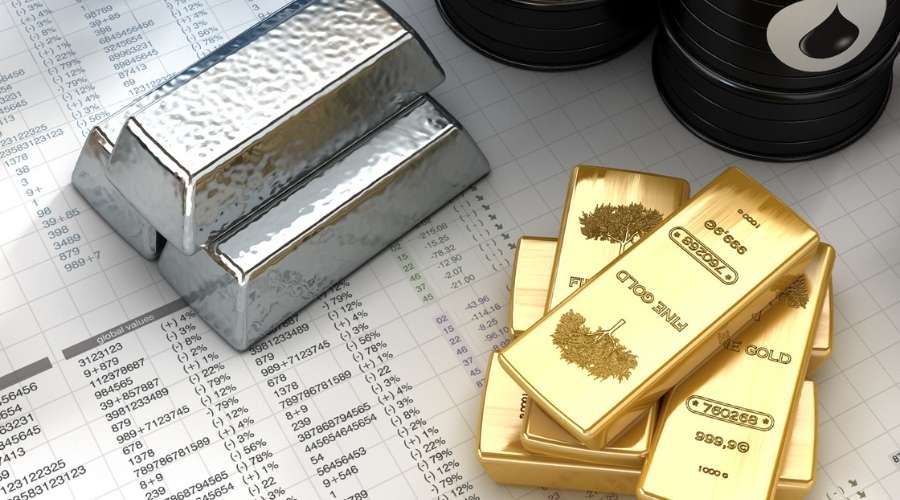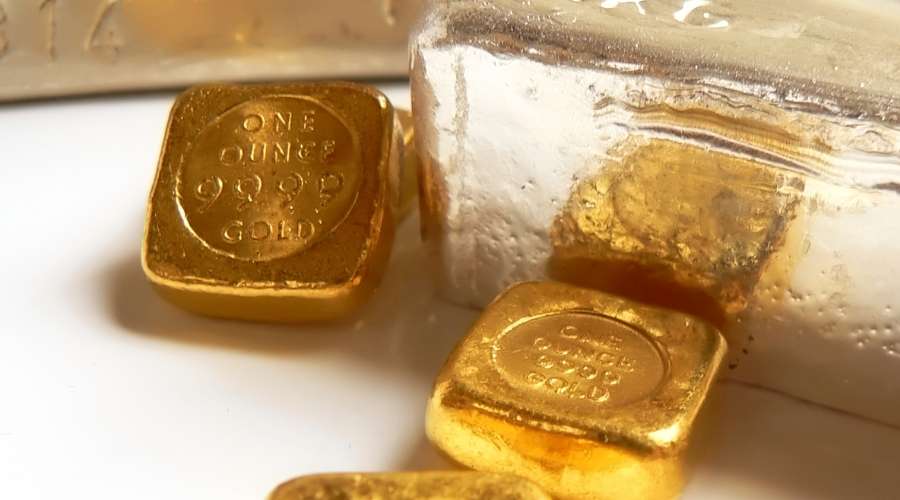If you are considering adding more precious metals to your portfolio, there are a few things for you to take into consideration. One of the significant factors is what percentage currently constitutes your total holdings in this asset class. If, for example, it is in the low single digits or even as low as one percent, then increasing that amount would be wise. You can use it to figure out approximately how much and which kinds of assets will work best for you and still not overshoot any overall risk tolerance limits you may have noted.

How Much Of Your Portfolio Should Be In Precious Metals?
#1. Start by determining how many precious metals you already have.
Take your total portfolio value, which consists of cash and other assets. Subtract from that the amount of real estate you own and any automobiles or other traditionally valued assets. The remaining number equals your total net worth. This value should be used to calculate how much of your portfolio should be in precious metals.
#2. Determine what percentage of your total net worth (the number above) is allocated to precious metals.
For example, if you determined that you have a net worth of $100,000 and 95% of it is invested in cash and real estate, then you would allocate 5% to precious metals. If the portfolio value were more outstanding than $100,000, you would give a higher percentage.
#3. Take the percentages you determined above and multiply them to calculate how much of your wealth you should allocate toward precious metals.
For example, if your portfolio is worth $100,000 and 5% is allocated to precious metals, you would give 5% x 5%, or $2,000, to gold jewelry and bullion. It is a meager percentage of your overall net worth, but it is still a significant amount.
#4. Subtract the percentages you allocated to precious metals from your total net worth.
The amount left over is the percentage of your overall portfolio that should be allocated to precious metals. If most of your net worth is given to other assets, you may want to increase or decrease the percentage accordingly. If all or almost all of it is in precious metals, you need not change anything further.
#5. Determine how much of your portfolio should be in each precious metal.
For example, if you choose to invest in gold, you will have to determine how much of that 5% allocation should be in gold bullion or bars and how much should be in gold jewelry. The same goes for silver or other precious metals. It is not a complicated calculation, and it is relatively easy. The only thing you must remember is that more precious metals mean more diversification, so if possible, allocate more toward a single metal than you would otherwise like.
#6. Once you have determined the percentage of your overall portfolio allocated to precious metals, give all this new amount into one or more precious metal assets.
This step is only required if you allocate a more significant percentage than anticipated to a single metal. If all of it went into silver and gold bullion, you no longer need to give any more silver and gold bars or jewelry.
#7. Determine what price the precious metal asset should yield after mining is completed, tax is paid on profits, and all other expenses are subtracted.
It is the amount you will pay for the same piece of real estate after all 12-15% inflationary taxation has completed itself. It is the actual value-producing entity, not the price of gold or silver at today’s market price. There’s no way that you can accurately determine today’s market price based on the cost of mining and manufacturing, as this cost takes place over a long period and includes all overhead, overhead such as research and development, along with individual company expenses in production, so there is no accurate way to calculate what it should cost from a pure money perspective. The only thing that could work would be if you could hire a mathematician and have him borrow the figures from Wikipedia or another credible source.
#8. Determine the appropriate risk tolerance for your portfolio.
For example, if you want to invest in precious metals but are only willing to take a small amount of risk, then you do not wish to invest that much. If, however, your portfolio is full of junk and very few valuable assets and you are very wealthy in general, then this would be a good time for a higher-risk investment strategy. Determining how much of your portfolio should be in precious metals and how different investments should be allocated is one way to diversify effectively.

Final Verdict
If you are considering adding more precious metals to your portfolio, there are a few things for you to take into consideration. One of the significant factors is what percentage currently constitutes your total holdings in this asset class. If, for example, it is in the low single digits or even as low as one percent, then increasing that amount would be wise. You can use this article to figure out approximately how much and which kinds of assets will work best for you and still not overshoot any overall risk tolerance limits you may have noted.
